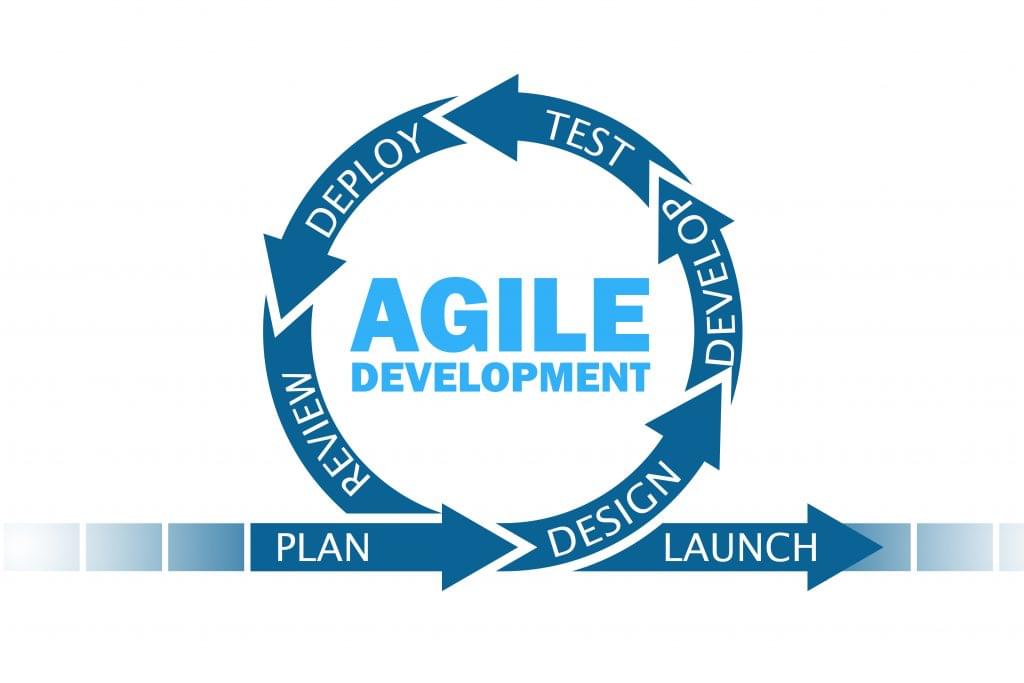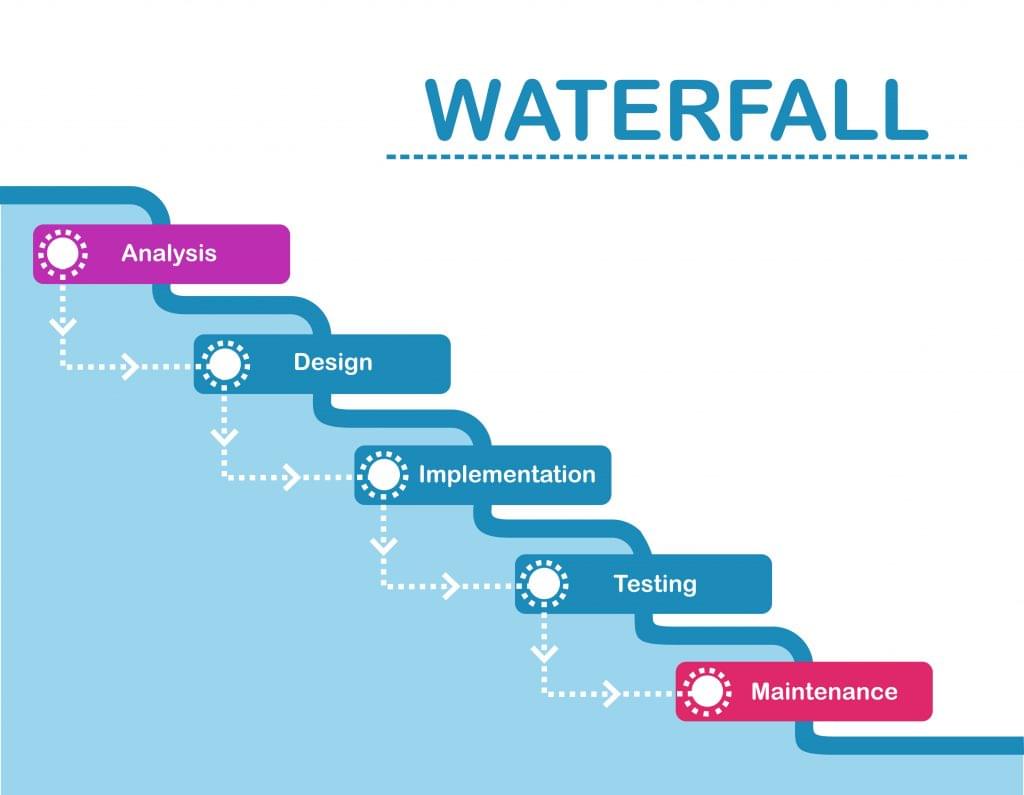Tags:
Project Management
When approaching a new software development project, often the first step is to decide which development method to use. Agile and Waterfall are two of the most commonly used approaches for both software development and project management as a whole. Agile is generally the more popular method, but both have their merits. The main difference between the two methodologies is that waterfall projects are completed sequentially, while agile projects are completed in a cycle.
In this article, we’ll discuss:
- Agile method
- Waterfall method
- Choosing the right method for your project
If you’re looking for quick answers for a project management tool that’s tailored to your business, check out our Project Management Product Selection Tool. After answering a few questions, you’ll get a short list of recommendations for project management software that will fit your needs.
Agile method

Concept of agile software development
About 81% of organizations use Agile according to a 2019 TrustRadius survey. Where Waterfall tends to value pre-planning, agile places value on adaptability and client involvement. Agile development methods come in a few different forms, including Extreme Programming, Scrum, Kanban, Lean Software Development, and Agile Unified Process.
Regardless of which form it takes, agile development has two major elements in time and teamwork. Agile breaks up the project into short, manageable time pieces known as sprints rather than creating one, long timeline for the whole project. After each sprint, you can collect feedback and analyze it to plan the next one.
Advantages
The agile method’s benefits are heavily influenced by customer satisfaction and the project’s end results. In fact, customer involvement is one of the main advantages of agile. The customer gets to see pieces of the work early and often, so they can assess, provide feedback, and make changes to the project. Not only do they get to ensure the project is meeting their specifications, they also get a strong sense of ownership due to their involvement.
Agile also offers more flexibility. The client sets deliverables in order of importance. For example, in software development, it’s possible to put out a very basic version of the software for immediate use and then improve and add on to it as the project progresses. This also makes the project more adaptable, as changes can be made as the client gets a better idea of what they’ll need. Because users and clients can provide feedback after each sprint, you end up with a better quality product.
Disadvantages
While customer involvement can be helpful, it can also be a huge pain. Clients without the time or interest in heavy participation can hold a project back and keep it from reaching its full potential. Yet, clients who are overly involved can adjust expectations and slow the project down, leading to higher costs and longer deadlines. This type of project also requires a heavy degree of communication.
Waterfall method

Waterfall focuses heavily on sequential steps: conception, initialization and analysis, design, construction and coding, testing, and implementation. Each phase must be fully completed before the next one can begin, and they are always completed in the same order. Generally, there will also be a review between each project phase.
Advantages
The linear approach of the waterfall method provides a clear framework for the project and makes it easy to identify what needs to happen and when. Additionally, the development team and their customers sign off on the entire project scope in advance, so there shouldn’t be any surprises along the way. These early agreements make it easier to track project progress. There is also heavy documentation throughout the process to prevent miscommunications.
Waterfall allows for a more hands-off approach from the customer, which is helpful for clients that have very busy schedules or little interest in the project. With this method, the client’s input is really only needed during the review phase. It’s also a slightly more hands-off approach for the development team. Depending on what phase the project is in, it won’t always take the full team’s time and attention, so they can work on other projects.
Disadvantages
Less customer involvement can lead to pitfalls if the project scope isn’t well outlined in the beginning. Specific details are a necessary part of the Waterfall method, which can be intimidating to some customers, especially if they don’t know exactly what they need upfront. This can cause problems later down the road as changes and adaptations are much more difficult with this approach. Finally, a customer usually won’t see the final product until it’s delivered, meaning there’s a risk for customer dissatisfaction.
Choosing the right method for your project
With both methods having advantages and disadvantages, it can be difficult to choose between the two. Agile is a good choice for software development projects that are on a tight timeline and will need to have a basic version rolled out before the full version is complete. Waterfall is a better option for projects without a lot of client involvement or hard deadlines.
Check out our Produce Selection Tool for project management software and get a short list of recommendations that will fit your business’s needs.
Technology Advice is able to offer our services for free because some vendors may pay us for web traffic or other sales opportunities. Our mission is to help technology buyers make better purchasing decisions, so we provide you with information for all vendors — even those that don't pay us.

